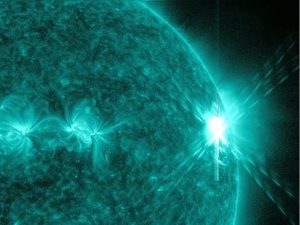
Recent tensions with North Korea have put the U.S. power grid on the front page. Former Chief of the Central Intelligence Agency, James Woolsey stated, “I think this is the principal, the most important and dangerous, threat to the United States.” He further said, “If you look at the electric grid and what it’s susceptible to, we would be moving into a world with no food delivery, no water purification, no banking, no telecommunications, no medicine. All of these things depend on electricity in one way or another.”
The United States of America is a society completely dependent on electricity. Food production, transportation, and communications all depend on one thing, electricity. The Department of Homeland Security classifies sixteen different critical infrastructure sectors. No sector is more important than the energy sector. No other critical infrastructure sector, from health services to the chemical sector can operate without electricity. It is the critical piece of our critical infrastructure. If the President and Congress decide to spend any money on infrastructure, the U.S. power grid should be alone, at the top of the list.
The U.S. power grid is comprised of three smaller grids. One grid powers the East Coast to the Rocky Mountains while another serves people from the Rockies to the Pacific. The last grid is the state of Texas. Each of these individual grids is comprised of a network of power producing facilities, tens of thousands of miles of transmission lines, and hundreds of substations, bringing power to your home and business.
A key piece of the energy chain is the high-voltage transformer (HVT). HVTs “step-up“ and “step-down” voltage of newly generated electricity for transmission and distribution reasons. The voltage is increased or stepped-up to transmit over long distances and then is decreased or stepped-down to be distributed to homes. Without these HVTs, it would be nearly impossible to supply the US with electricity. These HVTs are peculiarly vulnerable to attacks from man and nature. These transformers weigh between one and four hundred tons and cost up to eight million dollars. The Department of Energy estimated it could take up to 20 months for the larger HVTs to be built. What would the US look like without power for 2 months, let alone 1 year?
There four principle modes of attack that could destroy HVTs. These are an Electromagnetic Pulse (EMP), a Coronal Mass Ejection (CME), a cyber-attack, and a physical attack.
A nuclear bomb detonated in the upper atmosphere might not even be noticed by people on the ground. Most Americans would look up and see a sky that resembles the Aurora Borealis. However, they would notice the effects immediately. Their world could come to a complete stop. Cars could lose power and drift to a stop. Planes in the air could lose power and begin a rapid powerless decent towards the earth. Trains could lose power and coast to a stop. Anything with a microchip could be dead. This includes HVTs. A large device detonated 400-500km above Kansas would affect all within the continental U.S.
200 million people could die in a year without water and electricity.
A CME would have the same effect as an EMP, but on a global scale. A CME is an ejection of particles from the sun, also known as a solar flare. These happen quite often. The last major CME event to hit the Earth was in 1859. When it hit, there were reports of sparks shooting off telegraph wires in telegraph stations. A CME event today could shut down electronic devices worldwide.
On April 16, 2013, an attack occurred in Metcalf, California substation. An unknown number of assailants shot hundreds of rounds at the HVTs in the substation. The damage caused the substations to shut down. The energy companies were able to reroute power and avoid a shutdown. To this day, nobody has been charged in the attack. Many within and outside the government have labeled this a dry run.
Another lesser known attack occurred in Utah on September 25, 2016. An assailant fired several shots into the transformer’s radiator system. The shots caused the transformer to overheat and fail. The damage was estimated at $1 million and between 6 and 12 months to repair. Once again, power companies were able to divert power and prevent a cascading failure.
In response to the attack, Brian Harrell, a director in Navigant’s energy practice and former director of the cyberthreat-sharing portal at the North American Electric Reliability Corp, said, “we must assume that at some point in the future a North American utility will suffer from a planned and coordinated attack against electrical infrastructure.”
A coordinated attack on several substations at the same time has the ability to create a rolling blackout that power companies cannot keep up with fast enough, and overload the system. From there, the system crashes.
Small computers control every piece of the electric grid. These are Supervisory Control and Data Acquisition (SCADA) systems. SCADAs tell a substation how much voltage is coming in and going out. SCADAs tell HVTs when to shut down. By hacking these devices and infecting them with viruses, a hacker can force the SCADA systems to break the machines being monitored. The U.S. and Israel recently launched such an attack against the Iranian nuclear program. The virus was called Stuxnet. It was successful in destroying thousands of centrifuges. The cyber genie has been let out of the bottle, and the entire U.S. power grid is in danger.
It is time to take the security of the electrical grid serious. The principal reason for the existence of government is security. People come together to form groups for security. The U.S. government must not ignore the EMP threat anymore. The President and Congress have stated their desire to pass an infrastructure bill. The most important aspect of the infrastructure bill must be the electric grid.
Printus LeBlanc is a contributing reporter at Americans for Limited Government.
